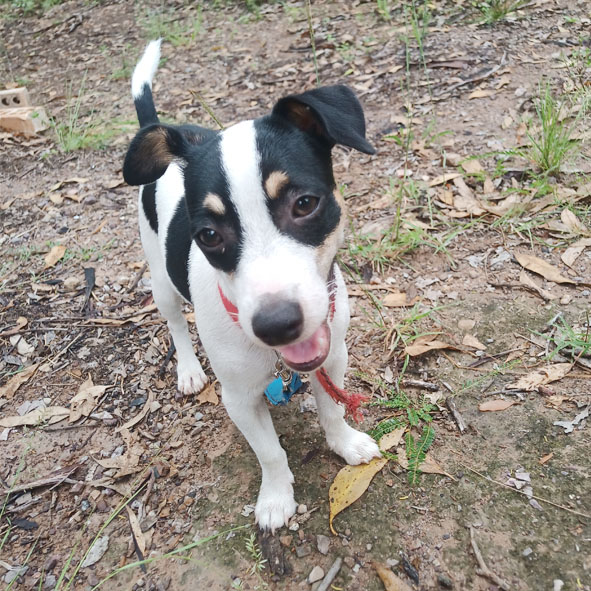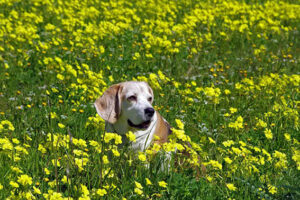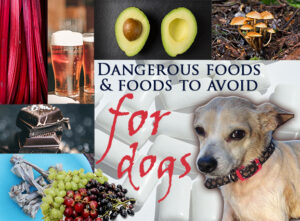In this essential dog guide, I am writing through the experiences I have had owning dogs for the past 15 years, keeping in mind that I didn’t grow up with any pets. I know that during the time when owning pets was new to me, I would have benefited from reading a guide that would have informed me about what to expect and what I should have prepared for. This is what motivated me to write about this particular topic.
Recently, we bought 2 puppy dogs – little toy foxies through our local classifieds. Our 10-year-old foxy cross Chinky has lost his friend of 7 years, a large kelpie dog named Stella. He was sad and lacked energy because one of his pack members was gone and it was obvious to see. So, in came our brand-new puppies of 6 months, the kids named them Simba and Angel, and they are both boys. He is now the happiest dog he has ever been. He is starting to act like a puppy, running around with heaps of energy, chewing more dog treats and playing like one.
Dogs are a fantastic and loving energy to have around the house but they can also be time-consuming and require pet sitting, especially if you are planning to travel. Unless you are a caravanner and don’t mind taking pets with you to pet-friendly places and accommodation.
Things can get a little crazy at times when you own three small dogs, especially with high-energy puppies. Being a dog owner is not always smooth sailing, but with love and patience, you can really get through anything. Owning pets also teaches you about yourself and your connection and empathy to living creatures and more of an understanding that a dog isn’t just a ‘dog’, like we see them on the outside. They feel hurt, joy, sadness, excitement and love – they feel emotions just like we do as humans.
Here are some key points to consider before buying a dog and what to expect if you are planning to adopt an adult dog or bring home a puppy… or puppies!
Size does matter
Large Dogs
Large dogs are suited for large properties, especially high-energy breeds. You would want to provide them with as much room as possible for running around in. They can be indoor dogs, but because of their size it’s best they have their own outdoor space and kennel. If possible, you could provide indoor space where they can also interact with family at certain times of the day. Be sure to set boundaries early. Where can the dog go? Where should I restrict their movement? For example, you won’t want to let them in any room where pet dander or tripping hazards can occur. If you have a breed that sheds and you have family members who have allergies to pet dander, you would want to keep the dog away from rooms where the person or persons frequent the most.
Large dogs take up more space and obviously, it is harder to lift them or move them around. Transport can be more difficult, as it is harder to get them in and out of the car. Behavioural challenges can arise in all dogs, but it becomes particularly important to train larger dogs to be obedient due to their size. They need to be trained to sit, to not jump up on people when they get excited as they can easily knock over small children. Their jaws are much larger than a smaller dog and can bite and nip out of play, especially as a puppy. Sometimes adult dogs can be territorial, and can demonstrate aggressive behaviour, especially when it comes to protecting their food. This was sometimes the case when we had our large dog Stella and when she was chewing a marrow bone. She would lunge at anyone who presented a threat to stealing her prized possession. If any behavioural issues exist or develop over time, they need to be addressed for their safety and that of the family.
Small to Medium Dogs
Small to medium dogs are easier to manage because of their size and weight. It’s easier to get them into the car or take them in and out of their crate. Because they don’t take up as much room, they would be well suited to live indoors, like a small apartment. Bad behaviour is not dependent on the size of any dog and smaller dogs need just as much training as larger dogs do. Nipping and aggressive behaviour need to be controlled in any size or breed.
One other thing to note is that smaller dogs live around 5 years longer than larger dogs on average, but this isn’t an exact figure and it can vary between dog breeds. 1
Self-questions:
Will a large, medium or small dog be best for my environment and the size of my property?
Am I able to provide enough room for the dog/s to run around in?
Habits and instinct
Digging Holes
Dogs love to dig holes. They will dig potholes in your yard, so be prepared to refill them as they can become a tripping hazard. If your yard or acreage isn’t well proofed, they also could easily escape by digging holes.
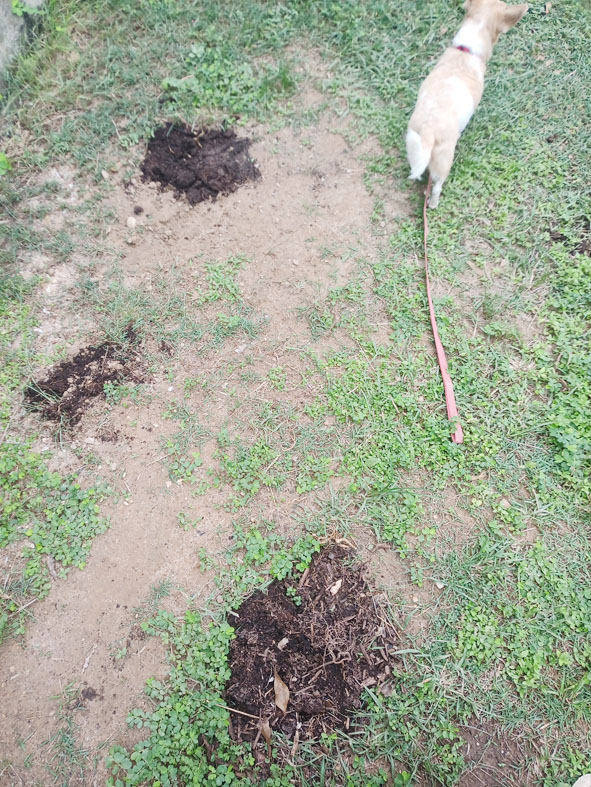
Eating Poo
If you live in Australia, they will love to eat kangaroo poop. Yep, that’s right, they seem to love those brown drops lying on the grass. Apparently, it’s due to a condition called coprophagia and is considered to be quite normal. It’s not just kangaroo poo either, it can poo from other animals as well. It’s normal for dogs to eat the poop of other species, but it’s abnormal for dogs to eat their own poop or other dogs’ poop. 13 I have read that ingesting some animal poo can be good for them as it adds nutrients essential for dog health. 14 On the other side of this, however, is the risk of bacterial and parasitical infestation. 10 I disagree with ingestion of poo from any source, and I try to prevent and avoid ingestion at all times. If their lacking nutrients is a concern, I would add more essential nutrients into their diet.
Hunting Instincts
Dogs chase and hunt birds and small animals. They do this out of instinct because they are descendants of wolves, so this behaviour is coded in their DNA. They also get an adrenaline rush from chasing. They feel proud when they chase and kill an animal because they believe they are providing for the pack. Breed type will help to determine if their hunting instincts are a dominant trait. 12
If you have other small animals like birds or guinea pigs, you will need to plan how to shield them from your dog. I have seen this hunting instinct in every dog I have owned, so it’s a common trait. From guinea fowls to guinea pigs, grasshoppers, insects, mice, rats… they will chase when they see movement, then try to catch them and sometimes kill them.
Toads and Snakes
This killer instinct can be dangerous if they chase snakes or toads. This is why I strongly suggest snake-proofing your yard or acreage, especially if you live in Australia. Unfortunately, I have witnessed a traumatic event that involved a snake and the death of a small dog, so I can’t stress how important this is.
Toads are also an issue, especially in northern parts of Australia. They are mostly nocturnal, which means if you live in an area with toads and you take them on a night walk, it’s essential to keep them on a short leash and keep a close eye on them. Toads can also hang around during the day, so providing your dog with a safe play area is important. Keep grassy areas short and clean up food scraps to keep toads at bay.11 I have had a few incidences where my dog Chinky has been sprayed on the mouth by a toad. I had to quickly rush over to the sink and wash out the poisons, taking care not to let him swallow the water. The poisons cause foaming at the mouth, some paralysis and difficulty opening his mouth and breathing. He was all okay after 15 minutes though. It’s best to get your pet immediate help if symptoms persist or worsen.
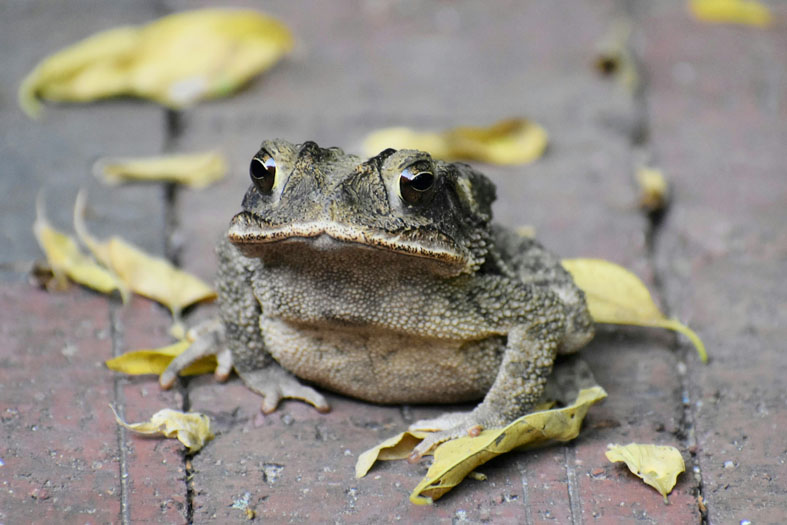
Photo by Al d’Vilas: https://www.pexels.com/photo/close-up-of-a-frog-5565783/
Self questions:
Am I able to proof my yard or acreage from snakes and toads?
Have I proofed the yard so they can’t escape, even if they dig a hole near a fence?
If I already own other small animals, have I ensured they are protected from the dog?
Menstruation
Female dogs menstruate or are in heat on average twice a year, but that also depends on the dog breed and size. The cycles can last 20-30 days. Smaller breeds may experience more frequent cycles. Their first menstrual cycle typically begins at around 6 months of age. Whilst they are in heat, pheromones are emitted, and these can be detected by a male dog from a great distance. 9 Watch out guys! You will be seeing male dogs visiting from all over the neighbourhood lining up to be with your dog. You have to make sure she is shielded from any unwanted visitors and monitored closely during this time.
Also, the bloody residue she emits when she is in heat can leave unwanted stains on fabrics and carpets if the dog is allowed in the house. This is something to consider also.
I have also experienced behavioural changes in our dog Stella when she was in heat. She would cry and whimper for no apparent reason. She also carried a squeaky toy around with her like a substitute puppy and would guard and shield it away from anybody who tried to get close to her.
I have had experience with this issue and I can honestly say this is one of the primary reasons I chose to purchase boy puppies. This may not be an issue for everyone, as we all handle situations differently.
Keep in mind that a female dog’s menstrual cycle can no longer occur after they have been spayed. 8
Self questions:
Am I well prepared to protect my dog from other neighbourhood dogs whilst she is in heat?
Am I well prepared to handle hygiene concerns whilst she is in heat?
How will I protect my dog from eating potentially toxic foods?
Dog breeds and temperament
When selecting a dog to join your family, temperament plays a crucial role. While breed can influence a dog’s demeanor, it’s essential to recognize that each dog is an individual with its own unique personality. However, researching a dog breed before buying or adopting a dog can help to predict what type of dog you can expect.
Some are bold and confident; some are happy and playful, whilst others can be more introverted and even aloof. Some breeds were bred for hunting, and some are used as working dogs. Some are very active; some are not as active. 2
Because of their unique personalities, I believe it’s really important to ask the owner, shelter or dog breeder specific questions relating to good or bad behaviours, habits and any health issues before you decide to buy or adopt your dog. This will ensure you are well prepared and are more able to choose the appropriate companion that will suit your family and lifestyle for years to come.
Low Shedding Breeds
If you have members of the family who are allergy-prone or have respiratory illnesses, it is best to find a dog breed that sheds very little. There is no such thing as a dog that doesn’t shed at all. Some of these breeds are poodles, Maltese, Chinese Crested and Bichon Frise to name a few. We used to own a Maltipoo we named Molly, and chose the breed for this very reason.
Be aware that these breeds will require regular grooming and trimming, especially in warmer weather. They will also need regular brushing because they can get matted easily. You will either need to purchase a pet clipper to groom them yourself or pay to take them to a groomer. Taking them to a groomer can be very stressful on the dog as they can develop separation anxiety and other fears. Taking them regularly and to the same groomer will create familiarity and therefore reduce stress. Learning to groom them yourself can avoid stress, add convenience and save money in some cases.
When Molly was alive, I chose to learn to groom them at home and learned how to do it myself. In the beginning, I was tentative, but with practice became more confident. I used scissors in the hard-to-reach and sensitive areas and clippers for larger areas.
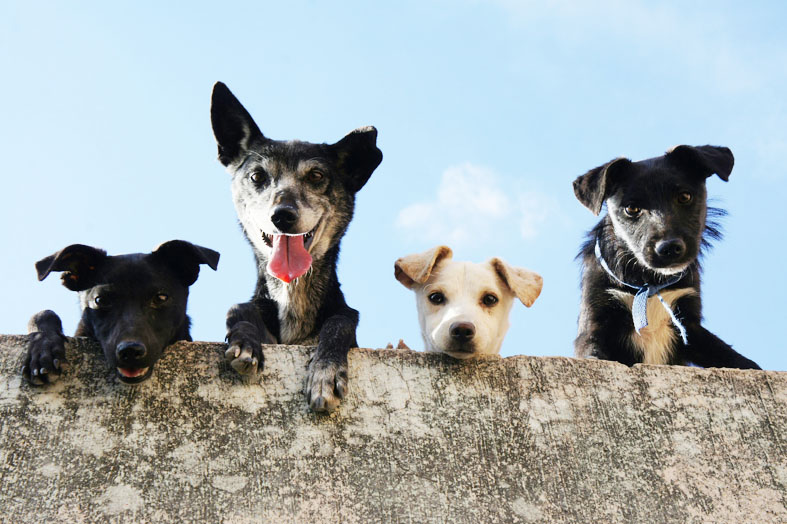
Photo by Edgar Daniel Hernández Cervantes: https://www.pexels.com/photo/black-and-white-short-coated-dogs-3628100/
Self-questions:
What type of breed would suit my lifestyle and my family?
Is a high-energy or placid temperament more suited?
What am I looking for in a dog?
What type of coat is best suited for my household?
If I take home a non-shedding breed, can I easily take them to a groomer or clip them myself?
More than one dog?
Dogs are pack animals; it makes sense that acquiring more than one dog can add happiness and joy to your pet’s life. Dogs love companionship because they can more fully express themselves through play, exercise and affection. However, this doesn’t always come without some considerations. Dogs can get territorial with other members and fight and growl at each other, especially in relation to food. If barking is an issue with one dog, the problem can compound with the more dogs you have. If one dog begins to bark, the others will usually follow. They also tend to mimic behaviours from each other, including negative ones.
If your dog is energetic, adding more dogs to the household will add even more energy and longer and noisier play times. Our three dogs love to play chasey with one another, catch balls and play games for most of the day. It is always best to ensure you can handle this high amount of energy and activity and isolate yourself from your pets when you need meditation time and space!
Self-questions:
Am I able to handle more than one dog in my household?
Am I prepared to handle dog training and discipline if or when required?
Am I able to provide an area for them to play whilst isolating myself when I need quiet time?
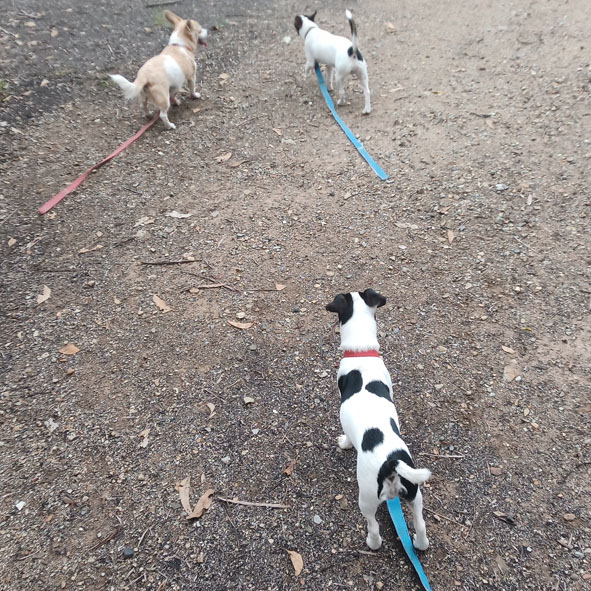
Get ready for puppies!
Puppies are super cute, right? Everyone loves playing with a puppy… but puppies don’t come without their challenges. They need constant supervision, especially for the first year, to ensure they are house-trained and protected from potential hazards. Puppies are going through their teething stages and love to chew. Chew and chew and chew! If you aren’t careful, they will chew the vinyl on your floor, charging and other thin cables, your favourite shoes (they love foam shoes), paper, cardboard and even clothing. Safety warning: keep all cables away from their reach, especially cables that have high voltages. Be well prepared and order a lot of rawhide chews or bones because they will need it. Seriously.
Toilet Training
Toilet training is best started with a crate, so you can, bit by bit, get them accustomed to your house and learn where they can and can’t go. I have a separate crate for both puppies to sleep in at night. When they need to go, they whimper, and then I take them downstairs. If find this approach works well. I also have a patio where I have laid leaves down for them to do their toilet business when I am too busy to take them outside, and then I reward them with a small treat as soon as they do their business. Having accessibility to an outside area will make it much easier for them than without easy access. Although more challenging and requiring more discipline, toilet training can be achieved with dogs living in high-rise apartments or double-storey buildings. Sometimes, you may need to provide indoor potties or pee pads. Even growing grass patches on balconies or patios can do the trick. 2
In any situation, it’s a good idea to keep dogs tethered to you on a leash indoors if possible. Doing this will help to prevent them from sneaking into a corner of the house and doing their business without you noticing. This does require effort, but it is worth it in the long run so they can develop good habits. I can understand it’s not always possible to walk around the house in this way, especially if you have more than one puppy. Puppies need to go to the toilet on average every hour. When they do make mistakes, have patience and remember that they are not trying to upset you on purpose, they do love you and want to please you. So, positive re-enforcement with rewards and affection is always the most successful approach when training your dog.
Playtime
Puppies are high-energy and require lots of playtime, so make sure you have an area where they can run and play to release and balance their energies. They can get restless if they don’t get enough exercise. They also get super excited when food time arrives, so make sure you keep them away from the kitchen when you are cooking. Sometimes, a fence or barrier might be required to protect you and your pets from accidents.
Discipline
When your dogs are puppies, this is the best stage for teaching them to sit, stay, come or go fetch. It’s also the best stage to socialize them, around other animals and humans. They do tend to bite and nip through play, something you will want to train out of them, especially around other children. They learn much faster when they are young, so do your research to find ways to train them early. YouTube has many free training videos to put you on the right track.
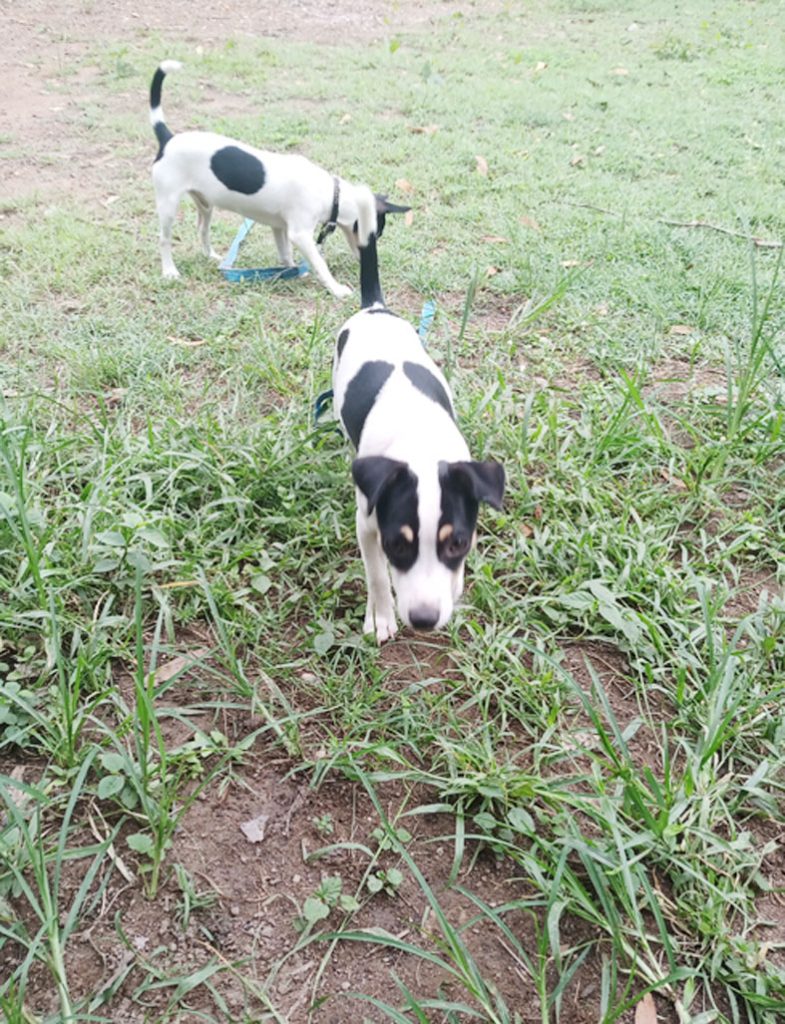
Our new puppies – Angel and Simba
Self-questions:
Am I able to provide the time and dedication to properly teach and train the puppy or puppies?
Is my house puppy-proof?
What methods will I use to toilet train them?
Am I able to provide ease of access, do I need to add a kitchen barrier etc.?
Am I able to socialize and provide them enough daily exercise?
Health and wellbeing
Diet and Nutrition
Dogs benefit from a natural and well-balanced diet. Home-cooked meals are always best because you are able to control exactly what ingredients go into each meal. They are also fresher and don’t contain as many additives as canned foods. I always prepare my dog’s meals by cooking vegetables and meat and adding carbs like a small amount of rice, pasta etc. It’s always best to use organic meats that are free from chemicals whenever possible. In the morning, I will feed them fruits like apples, pears or even bananas. I sometimes like to add a small amount of magnesium or nutritional yeast to their main meals for added benefits. You can do your research to find what specific foods are healthiest for your dog.
A Must Read For Dog Owners: Dangerous Foods and Foods to Avoid is another article I wrote that may also help with preparation for a new dog.
Exercise
Dogs need regular exercise, and it’s a good idea to give them a consistent time of day for regular walks. Puppies have more energy than adult dogs and require more exercise in short bursts. The aim for an adult dog is to be active for 1-2 hours a day. Age, breed and health levels are factors when considering how often and how much exercise they need.6 After a little while, you will be able to read your dog’s cues and you will be able to tell when your dog is restless and needs a walk or a run. Keeping active keeps your pet balanced, both physically and emotionally.
Ticks and Fleas
Dogs are prone to fleas and ticks, especially in humid places like where I live. You may need to purchase a flea treatment to keep them at bay. There are many different brands of topical treatments available. Another option is to ingest chews that prevent and kill fleas and keep other parasitical diseases under control. I like to keep chemical use to a minimum though and seek natural alternatives instead wherever possible. I prefer to keep my dogs healthy in the most natural way possible. One solution I have found through my research over the years is recommended by the Canadian naturopath Hulda Clarke who wrote the book ‘The Cure for All Diseases’. She recommends a protocol using natural herbs to keep a pet’s parasites and other diseases under control.
Grooming
As discussed earlier, dogs need regular coat grooming including brushing and trimming. This is especially true for low shedding breed, as they are prone to matting. They also require regular ear cleaning and nail clipping to maintain health and hygiene. Check for long curly nails as they can sometimes grow into their skin and cause pain. Make sure you don’t cut into the quick, which is the sensitive part of the nail that contains nerves and blood vessels. If you decide to get your dog professionally groomed, they will take care of most of these requirements.
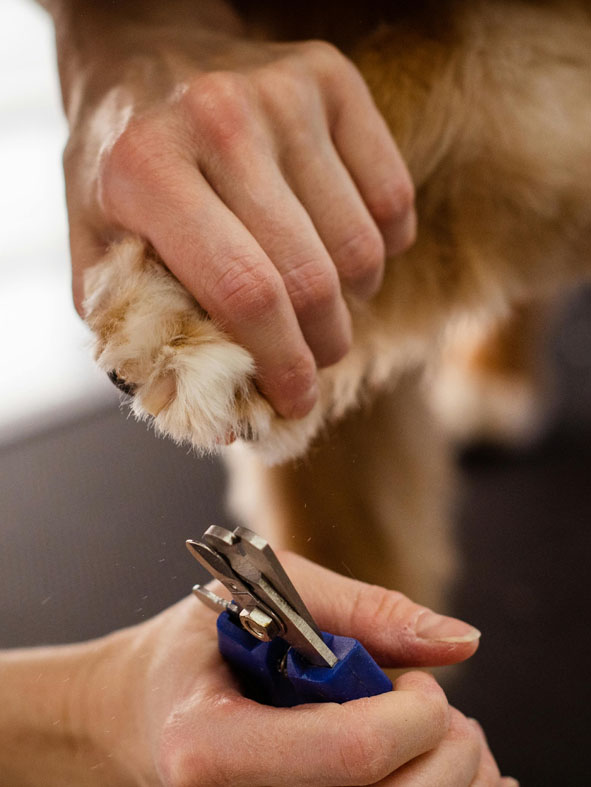
Photo by Goochie Poochie Grooming:
https://www.pexels.com/photo/dog-groomer-trimming-dogs-nails-19145872/
Bathing
Dogs don’t typically need bathing too frequently. Too many baths can strip natural oils from their coat. Around one bath every two or three months is okay, but this can depend on the type of coat the dog has and whether they are prone to skin allergies or dermatitis.5 Also keep in mind that if using a topical flea treatment, it’s best not to bathe them too often as I have found it keeps the potency of the product at its highest.
Teeth Cleaning
Dogs need to clean their teeth because just like humans they are prone to plaque build-up which is one of the main causes of Periodontal disease in dogs.4 I provide my pets with a rawhide chew at least once a day to help keep the surface of their teeth cleaner, although this won’t give them a deep clean. They benefit from teeth brushing and the more often you can do this the better, at least 2-3 times per week. Choose a good quality product without harmful ingredients when brushing their teeth. If your dog has mouth and gum issues, you may want to research the benefits of chlorine dioxide for teeth and mouth health. In my experience, it has been very effective on my teeth and gums and it can also be used for pets. Some companies sell products for dogs with this ingredient to protect oral hygiene.
It’s also best to see a natural or holistic vet where possible or one you can sincerely trust for regular health check-ups. At least once every year is recommended as a minimum.
Self-questions:
Am I able to provide the time and attention my dog needs for health and hygiene?
What healthy foods and nutrients will I select to keep my dog strong and sustain energy?
Am I able to set out times throughout the day to take my dog for a walk or run?
Am I able to take my pet for regular vet visits?
Pet sitting
In my experience, I have found this factor to be one of the biggest reasons why it can be challenging to own a pet or pets. Owning a dog requires pet sitting, especially if you travel and can’t take them with you. Ensuring they are looked after whilst at work or travelling is an important factor to consider. It is possible to take your dog on vacation, but of course, you will have to plan your trip around your pet and choose pet-friendly places to go to, including accommodation. Dogs are prone to separation anxiety, so having a reliable person you can trust to look after them whilst you are away, makes owning a pet much easier.
Self-questions:
Am I able to provide pet sitting for my dog when I need to travel or am away for long periods of time?
What to buy
Here is a list of essential items to buy for your dog.
- Dog collar or harness and a leash
- Chews or bones for adult dogs and teething puppies
- Treats as training rewards
- Good quality toothpaste and toothbrush
- Pet bed or dog kennel
- Comfortable sized indoor crate, car carrier
- Indoor pet potty (if required)
- Grooming tools (if required) for allergy friendly breeds
- Pet vest/jumper for cold climates or for cooler nights
- Nail clippers, pet brush (if required)
Would you like to sew your own dog bed? Try How to Make a Fabric Scrap-Filled Dog Bed for a Large Dog.
Love and affection
While all the practical and responsible duties I’ve mentioned are crucial, at the very top of the list of essentials for your dog lies love and affection. After all, why would we choose to own a dog in the first place if it wasn’t for the loyalty and unconditional love we receive from these wonderful animals? I believe that humans want (and sometimes need) these qualities just as much as a dog does! You can usually expect this bond to grow over time as they become part of the family.
They are such emotional creatures and I often see them as young children. Sometimes I forget that they are even dogs, and I am reminded of when my children were three and the emotional similarities between them.
Dogs are also wonderful for children. Children have a natural connection to animals and nothing compares to growing up with love and affection for the family dog.
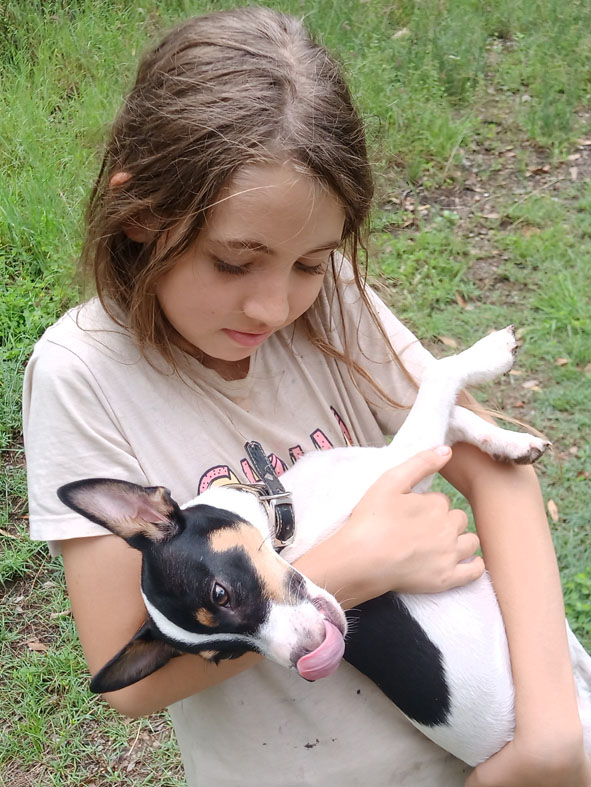
Self-questions:
Am I able to provide the time, love, affection and dedication my dog needs to be happy?
If you are considering adding a dog to your family, I hope this essential dog guide helped you and your loved ones prepare your home, life, and mindset for your new addition. May your new friend bring joy, love and companionship for many years to come.
References:
- 1. Lifespan of a Dog: A Dog Years Chart by Breed (petcarerx.com)
- 2. Temperament And What You Need To Consider (dogsaustralia.org.au)
- 3. How to Potty Train a Dog When You Live in a High-Rise Apartment (akc.org)
- 4. Everything You Need to Know About Periodontal Disease in Dogs (akc.org)
- 5. How Often Should You Bathe Your Dog? | PetMD
- 6,7. How Much Exercise Does a Dog Need Every Day? (akc.org), Exercise for Dogs: Keeping Your Dog Fit and Active (thesprucepets.com)
- 8. Does a Spayed Dog Still Have a Period? Bleed After Spaying | Dog Advisory Council
- 9. A Guide to Dog Menstruation | PetGuide
- 10. My Dog Ate Kangaroo Poo Will He Get Sick? | Our Fit Pets
- 11. Toxic Toads – Pet Behaviour
- 12. Why Do Dogs Kill Birds? + How to Stop the Killing & Chasing (doggysaurus.com)
- 13. Reasons Dog Eat Poop and How You Can Stop It | PetMD
- 14. Kangaroo Poop Is Good For Dogs – BabelBark
Any experiences with owning a pet that would help people who have never owned a dog before? Any experiences you would like to share? Feel free to comment below.

